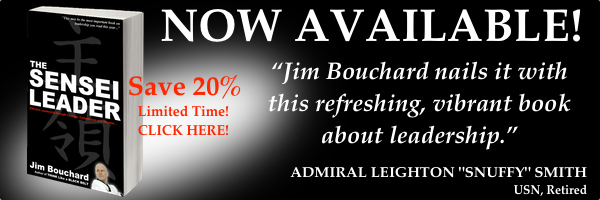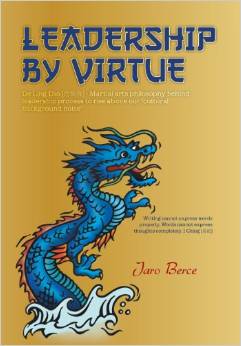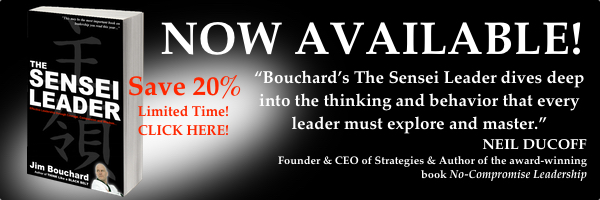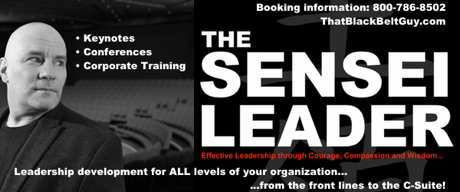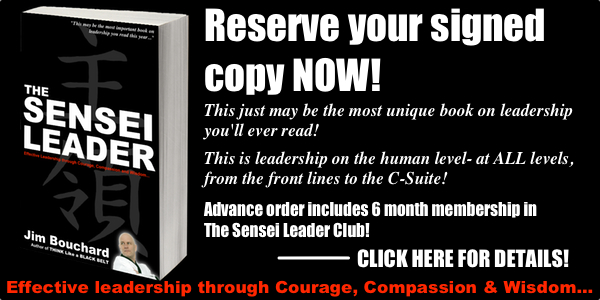 The following is an excerpt from Jim’s latest book, THE SENSEI LEADER:
The following is an excerpt from Jim’s latest book, THE SENSEI LEADER:
I told you about my past life as a drug addict. I told you about the times I was literally facing myself in my bathroom mirror. I absolutely hated what I saw.
 I also saw my reflection in a mirror the first day I opened my martial arts center.
I also saw my reflection in a mirror the first day I opened my martial arts center.
We usually install a wall of mirrors in the dojo so students can see what they’re doing as they practice. On this first day, of course, I was the only one in the building.
I wanted to make sure I looked the part, so I put on my uniform and stepped in front of the mirror to tie my belt.
I have to admit, I spent a few minutes just looking at myself. I was, for one of the first times in my life––genuinely proud.
What I saw in the mirror this day was much different than the reflection from my drug days.
From then on, clear sailing––right? Of course not!
Over the years I faced many challenges. I still do—and I expect to face many more. What was different that day was that I felt ready for these challenges.
I understood myself on a much deeper level. I understood the process of awareness. I knew that I would examine and challenge myself as much as, if not more than anyone else would.
I also knew that from then on, I could accept whatever reflection I saw in the mirror––and that I could always grow from there.
Whether you take this practice literally or metaphorically, you’ve got to find some way and commit some time to look in the mirror once in a while. You’ve got to think clearly about what you see there. You’ve got to decide whether that reflection represents who and what you truly want to be at any given time, or you’ve got to reflect on what you want to change––and how.
Awareness is the practice of assessing who and where you are—right here and right now. It’s the practice of paying attention and understanding the circumstances and conditions you are experiencing—right here and right now.
It’s also kind of an inventory. What material, emotional and spiritual resources do you have at your disposal––right here and right now?
On its highest level, awareness is understanding others and your relationship to the people around you. After all, your life is a human experience largely defined by your relationships with other human beings.
Awareness is your ability to experience life here and now.
The past and future are important too, but you can’t do a damn thing about your history or your dreams, except by what you do––right here and right now.
The ancient masters taught us that the only thing that lasts forever is the present moment. The past is done and the future hasn’t arrived yet. You make amends for the past and you shape your future in the present. Awareness is your ability to be open to this present moment.
I said that external awareness is relatively simple once you master the internal process. I can sum it all up in another game I still play when I teach kids …
I yell, “Eyes?”
They yell, “OPEN!”
“Ears?”
“OPEN!”
“Heart?”
“OPEN!”
“Mind?”
“OPEN!”
“Mouth?”
“CLOSED!!!”
That’s the entire formula for awareness.
Now––go look in the mirror!

